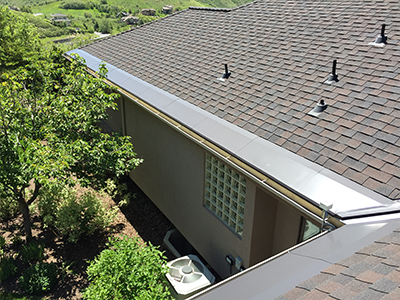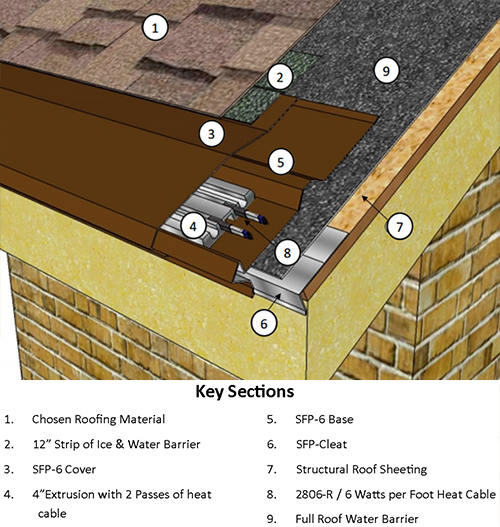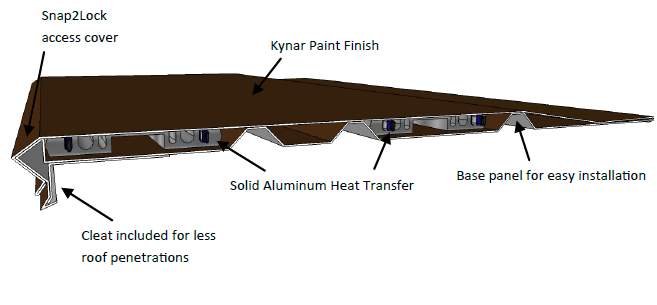Attractive roof de-icing panels feature self-regulating heat cable that is channeled into aluminum panels to provide maximum heat transfer. Typically used to retrofit existing roofs with radiant heat, the roof heating panels can be more expensive than other roof de-icing systems, but extremely effective in melting snow and ice from roof edges.

The aluminum panels are powder-coated with a durable finish in a wide variety of colors to complement the aesthetics of your home. When mounted to your roof eaves and/or valleys, the roof heating systems efficiently melt ice and snow in those areas, enhancing safety and reducing the risk of winter damage caused by ice dams.
Existing metal roofs can also be retrofitted by placing the aluminum roof heating panels directly on top of the old roof. The aluminum alloy panel is in direct contact with the self-regulating heat cable at all times, so the heat is conducted efficiently throughout the panel to prevent any snow or ice build up at the edge of the roof, eliminating ice dams and dangerous icicles.

Roof heating panels are available in a variety of sizes and finishes to add curb appeal to homes. Because the aluminum panels transfer heat so effectively, these systems keep entire areas free from snow and ice. The heat cable channeled through the panel quickly heats the metal, eliminating ice dams from developing along the roof eaves.
In addition to a variety of sizes of heating panels being available, these systems can also be installed in roof valleys to facilitate runoff. Heating panels as small as 6-inches in width are available, and typically range in size up to 48-inches in width. Roof heating panels are one of the most efficient roof de-icing systems available, and can be used with a variety of roofs, including asphalt of wood shingles, tile (or slate), and even standing seam metal roofs.
Be sure to confirm with your roof de-icing system provider that your panel heating system is compatible with your roof. The top roof heating system providers will custom design your de-icing system to best meet your layout and budget. These detailed layouts will also include all of the electrical information for your electrician, so be sure to deal with professionals who include this service. Call 888.488.9276 and consult with a roof de-icing professional to learn more about the roof heating options that are available, and which system is best suited for your specific de-icing needs and budget.
|
Heating Element |
|
Activation Device (Snow Sensor) The WS-8C is a proven industry leader that features a remote sensor that can be installed in the ideal location to detect temperature and precipitation. When the snow sensor detects a specific temperature and accompanying precipitation, it automatically signals the contactor panel to activate the system. Power is then sent to the heating cables just as the storm hits, and the system then shuts off after the storm. The system is proven reliable and energy efficient, making roof deicing systems a trusted, maintenance free solution for protecting against roof and water damage, as well as enhancing safety by eliminating large icicles and falling sheets of ice. |
|
Contactor Panel Upon receiving a signal from the activation device (such as the WS-8C), the contactor panel then sends power to the heat cable, which quickly warms the roof to prevent snow and ice buildup. |
